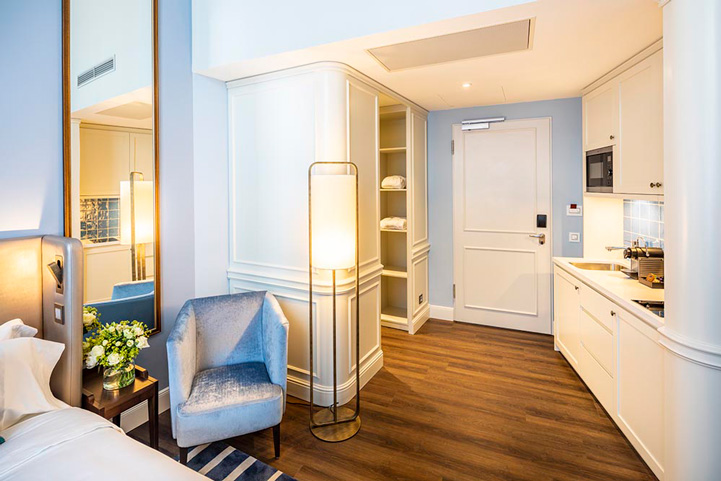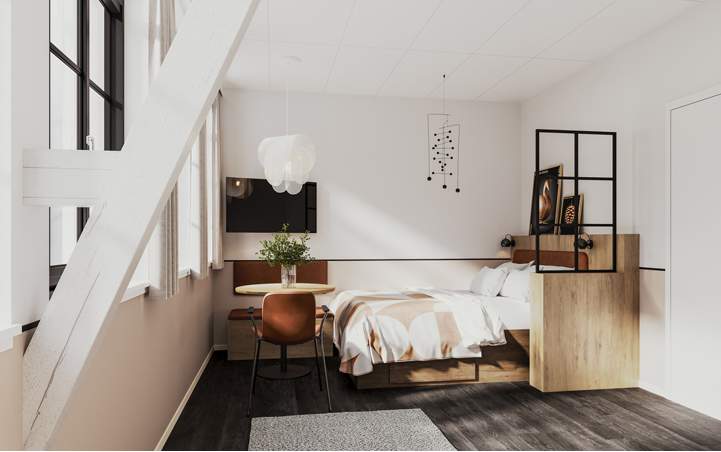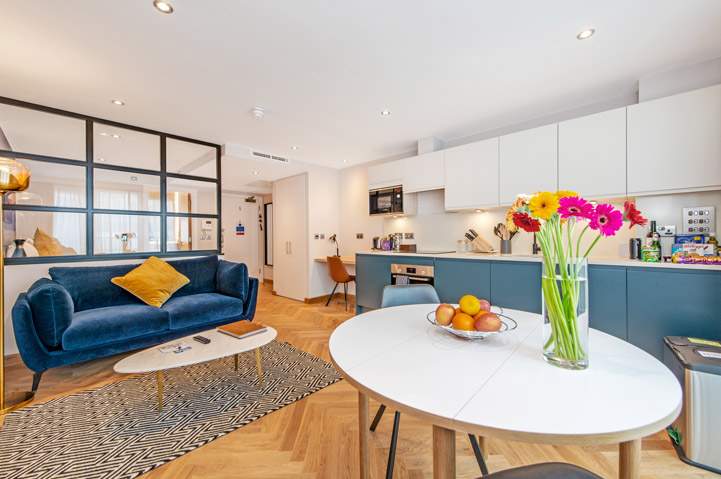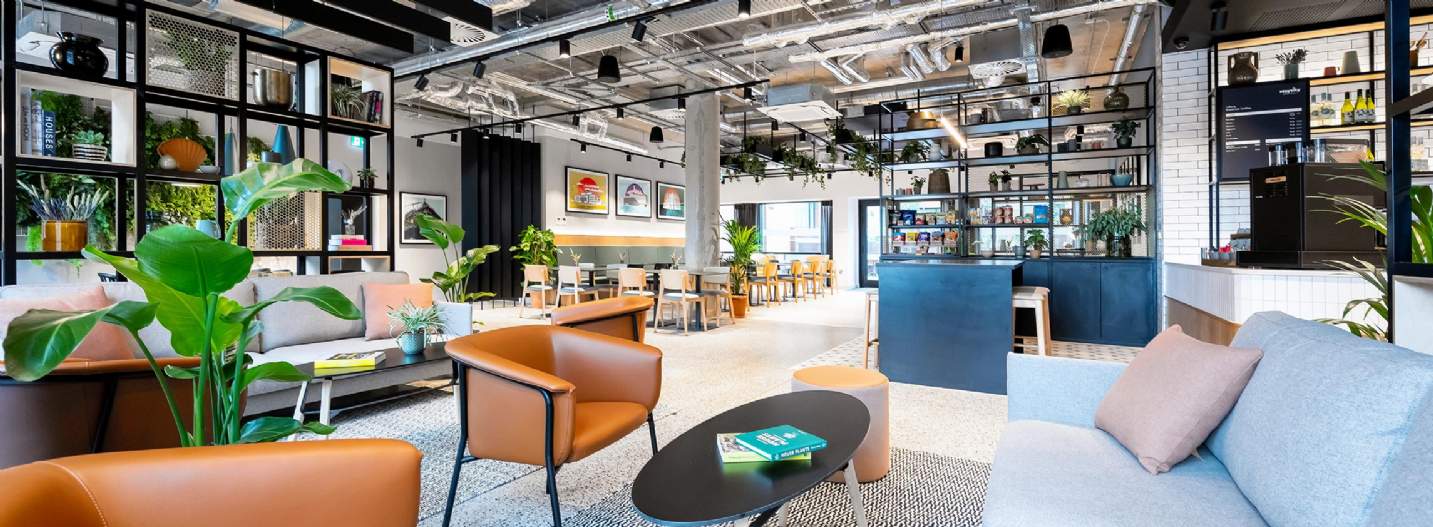Investor interest surges as the lines between hospitality and residential blur
Key Points
Why serviced apartments?
- Serviced Apartments (also known as 'extended stay'; we use both terms interchangeably in this report) have shown robust performance, with KPIs typically above those seen for equivalent hotels.
- The evolving maturity of the sector means that institutional grade stock is largely apart-hotel in nature, albeit typical unit sizes and on-site facilities vary depending on the operator/ brand.
- Average annual RevPAR rates between 2021 and 2023 for the UK extended stay sector were 27.5% higher than the hotel average.
- The sector typically enjoys higher profit margins. Central London properties can achieve net operating profit margins between 45–55%, compared to 30–40% for hotels.
Sector growth and attraction
- The sector recorded nearly €700 million in transactions in 2023, representing 4.7% of total hospitality volumes.
- Increased consumer awareness, the rise of digital nomads, and the curb on Airbnb in some markets will support demand and operational performance.
- Extended stay currently represents a small portion of the total European hospitality market, averaging 6.1% of the total accommodation supply in major cities: there are significant opportunities for development and expansion.
Outlook
- Investment activity to pick up pace in 2025, supported by an increase in stock and continued investor interest.
- Global hotel groups, such as Hilton and Marriott, are looking to accelerate the rollout of their extended stay concepts, further helping to legitimise the sector.
- Blurring with co-living and student to become more common, albeit expansion will continue to be dominated by specialist extended stay operators/brands.
Operational Outlook
Enhanced profit potential aided by strong KPIs
Like other parts of the hospitality market, operational performance for the extended stay/Serviced Apartment sector has started to normalise.
Year-on-year (YoY) KPI growth for UK Serviced Apartments started to slow through the course of 2022 and into 2023, with most months in Q4 2023 and Q1 2024 seeing RevPAR growth drift into negative territory, largely driven by London.
This is a trend that we have seen in the wider hotel market, albeit to a slightly lesser degree.
Despite this normalisation in YoY comparisons, RevPAR remains significantly above 2019 levels, with the differential for UK Serviced Apartments averaging 19% over the first six months of 2024.
Serviced Apartments marginally outperformed hotels during the pandemic. They were the first to recover, benefiting from increased customer appeal due to the relative ‘isolation’ they offer. This is evidenced by RevPAR growth between 2021 and 2023, where the three-year CAGR for UK extended stay was 40% per annum against the 29% recorded for hotels.
This outperformance has since subsided, particularly against London hotels, as international tourism has resumed. As a result, the ten-year CAGR for Serviced Apartments in the UK is 1.2% per annum, a third of that reported for hotels.
But, it's not solely about growth, particularly as outperformance can be influenced by growth from a lower base. In terms of actual performance metrics such as occupancy, ADR (average daily rate) and RevPAR (revenue per available room), extended stay averages outperform average hotels.
For example, the average annual RevPAR rate between 2021 and 2023 (inclusive) for the UK extended stay sector was 27.5% higher than the hotel average.
Enhanced RevPAR rates are aided by the fact that ADRs in the sector tend to be higher, as unit sizes are larger than the average hotel. Likewise, higher average occupancy has also played a part (see Figure 2).
This, coupled with the fact that extended stay operations tend to have lower staffing levels with fewer services, means that operations usually have higher profit margin levels. For example, we would expect a typical block in Central London to have a net operating profit margin in the region of 45–55%, against a 30–40% margin for an equivalent hotel.
The customer base expands
An expanding customer base and increased concept awareness will continue to support demand.
Growing customer awareness of the sector, helped by Airbnb, has been well documented and is reflected in the anecdotal evidence from operators who have reported an increasing leisure guest share. With a number of European cities introducing legislation to curb the use of traditional residential units for short-term use, such as Airbnb (Barcelona being the latest to announce a ban), we are likely to see much of that historical Airbnb demand migrate to professional extended stay product such as apart-hotels.
This, coupled with the growth in longer-length trips (those in excess of 4+ nights), has been critical to driving demand.

Fraser Suites Hamburg
On average, it would appear that length of stay has been contracting since the early 2000s, helped by growth in budget airlines and the rise in the short city break. However, looking at the top-line average only tells part of the story. Examining the number of trips across different trip lengths suggests that there is a growing customer segment who are likely to prefer a Serviced Apartment/ apart-hotel over a hotel stay due to the home-away-from-home feel and greater level of space.
For example, in London, international visitor trips lasting between four to seven nights and eight to 14 nights reported the strongest growth in the ten years to 2019, at 4.3% and 5.0% per annum respectively (see Figure 3).
These trips also account for a sizeable part of the market; nearly half (48%) of all international trips to London in 2019 were for between 4–14 nights, an increase on its 43% share in 2002.
This part of the market has also been one of the fastest to bounce back following the pandemic. 2023 international arrivals staying for four to seven nights reporting trip numbers just 0.3% below 2019 levels, with trips over 15 nights up 2.3%. This is against a backdrop where total international arrivals to London in 2023 were 6.6% below 2019 levels.
Emergence of digital nomads
The emergence of new customer segments is also positively feeding into extended stay demand. Post-pandemic, we have seen the emergence of Digital Nomads in response to the growth of agile working.
A recent survey suggests that 28% of employees worldwide work from home either all or most of the time, which is more than double the 10% reported in 2019. An increasing number of these, particularly younger employees, are choosing to travel and work, basing themselves in new countries and cities for long periods.
The majority of these trips (55%) last between one to four months (Digital Nomad Report 2023). The top city for Digital Nomads to date in 2024 is London, with 2.3% of all those surveyed globally citing it as a city they visited on their most recent/current trip. European cities represent just over half of the top 10 most visited cities worldwide (see Figure 4).
The nature of these trips would make extended stay/Serviced Apartments particularly attractive, and anecdotally we have heard from operators that there has been an increase in levels of demand from these types of customers. This guest segment also has a bearing on the design and facilities offered by operators, with the provision of co-working space now becoming a major feature.
Where are the development hotspots and opportunities for further expansion?
Paris and London are the lead markets in Europe in terms of current supply, with more than 11,000 units each, reflecting the size of their visitor markets. Based on the committed pipeline (schemes under construction and in final planning and expected to complete by the end of 2028), London is expected to overtake Paris as the largest Serviced Apartment market in Europe, with a projected 21% increase in supply.
Other development hotspots include Dublin, with close to 700 units in the development pipeline, reflecting a 34% increase in supply, albeit off a low base. Likewise, Lisbon will see a doubling in supply, also off a low base, with over 500 units in the pipeline. In percentage terms, the increase in supply is sizeable, but the reality is that extended stay continues to constitute a relatively small, albeit growing, part of overall European hospitality supply
Across Europe’s largest city markets, extended stay accommodation accounts for an average of 6.1% of total accommodation supply. Paris and Frankfurt lead with a share of 11.6% and 12.1%, respectively. In London – currently the second biggest extended stay market in supply terms – it makes up a 7.0% share of total accommodation supply. Even in Lisbon, where supply is expected to double, its market share is only 2%.

Bob W Østerbro Copenhagen
The sector’s relatively low hospitality market share means that most markets in Europe continue to offer attractive scope for expansion.
This expansion potential is further highlighted when examining current extended stay stock levels relative to the number of international arrival nights where trips are in excess of four nights, as it highlights several markets that remain relatively undersupplied by Serviced Apartments. On this basis, Lisbon and Stockholm stand out as being the most relatively undersupplied. For these markets, extended stay stock nights (stock/units multiplied by 365 nights) account for only 1.6% and 2.8% of total nights where trips are longer than four days. Frankfurt, Munich and Dublin are at the other end of the spectrum, albeit these markets still offer room for further expansion, considering the profile of demand and the sector’s low market share.
Even in Paris and London, where stock is over 11,000 units, there is a relative undersupply and an opportunity to capture a greater share of the longer-stay market. The size of the potential opportunity that exists across European markets is likely to be exacerbated by the emergence of co-living as there is the opportunity for operators to pivot into both demand segments where suitable.
The big players continue to drive expansion, but some new names are accelerating
Staycity, one of the biggest operators of extended stay in Europe, is projected to be a leader in terms of stock expansion, with over 2,700 new units already committed. Adagio Aparthotel continues to accelerate its expansion, with over 1,500 new units across eleven locations committed to be delivered. Edyn, with its stable of extended stay brands, a former leader when it came to development pipeline in previous years, still has a sizeable pipeline, although this has started to slow as its focus shifts to existing operations ahead of a potential sale.
There are, however, some relatively new names featuring in the top 15 when it comes to pipeline. Numa, the digitised hospitality platform, has seen rapid expansion over the last five years, with a known committed pipeline close to 500 units.
However, much of Numa’s recent growth has come from M&A activity rather than development. For example, it acquired YAYS in 2023 and, in July of this year, Native Places. The latter will add 800 units to its portfolio, all of which are in the UK, bringing Numa’s European portfolio to over 7,300 units. Bob W is also in expansion mode, with the potential to increase current stock by over 4,000 units.
Less familiar names featuring in the top 15 in regard to committed pipeline include Stayery, limehome and Líbere (box below provides some additional background). Stayery, like Numa, is a German-based design-and-technology-focused concept, and while it is much smaller (current stock is about a tenth of that of Numa), it has significant growth aspirations, with a committed pipeline similar in size to its German counterpart.
It’s not just dedicated serviced apartment brands that are in expansion mode: global hotel group Hilton is making its western European debut with its extended stay brand Home2 Suites in Dublin, following in the footsteps of Marriott’s rollout of its Residence Inn brand.
What is clear when looking at recent and future expansion is the growing shift towards digitised lifestyle concepts, many of which are trying to find the sweet spot between a digital customer journey that helps to maximise profits while still delivering a brand experience that engages customers and drives demand.
The growth of the co-living sector, and the blurring of that with extended stay, is offering operators new ways to grow their customer base and underpin investments. Likewise, extended stay is offering co-living operators a potential avenue to enhance returns, as daily rates tend to be higher.
Investment market outlook
Investor interest in the extended stay sector has increased, but the lack of investable stock remains a significant challenge
European extended stay transaction volumes totalled close to €700 million in 2023, only 4.7% of total volumes in the wider hospitality space.
Although activity was dwarfed by hotel investment, it did fare better when it came to annual comparisons, considering the wider slowing in the investment market. Volumes in 2023 were 1.3% down YoY and 17.2% below 2019 levels. In contrast, transaction volumes for the wider hospitality market were down 18% and 44%, respectively, over the same periods.
While investment activity has been relatively challenged, as has been the case for the wider market, its appeal to investors has improved. In Savills latest European Living Investor Sentiment Survey, 30% of respondents cited that they were targeting European extended stay/Serviced Apartments over the next three years, ranking it sixth out of 15 living sectors covered, and ranking higher as a target than some more traditional parts of the hospitality sector. This may, however, reflect the fact that investors already have a greater exposure to hotels than extended stay.
The sector’s rising appeal to investors may be in response to its typically higher profit margins – all the more attractive considering the rise in debt costs and greater lender scrutiny on debt serviceability. For example, depending on the market, profit levels can be 10–20% higher than comparable hotels. Likewise, greater consumer awareness, strong future demand fundamentals and the blurring with co-living in some cases have all combined to move the sector up the ‘wish list’ for investors. Its KPIs relative to more ‘established’ bed asset classes, such as Hotels and PBSA (purpose-built student accommodation), are also helping to underpin investor interest (see Table 1). Improved investor interest is only half the story.
Without high-quality investable stock available, these aspirations cannot be realised, and this remains a major barrier as the sector is still in growth mode. As a result, we have seen investors and owner-operators look to op-co/ prop-co platform acquisitions as this provides a much faster route to stock expansion as opposed to single asset acquisitions and development.
Numa has been particularly active in this regard, purchasing the YAYS portfolio in Q4 2023 and, in July of this year, Native Places. The latter acquisition will provide Numa with 800 units in the UK, and as with the YAYS purchase, gives them immediate exposure to new markets.
Looking forward, we expect there to be further consolidation in the sector over the next twelve months. In regard to real estate transactions, these are likely to remain relatively muted over the remainder of 2024 as debt costs and lack of product weigh on activity. We expect this will improve in 2025, helped in part by a number of portfolios coming to the market and a further softening in debt costs.

Atelier House, London by City Apartments Limited
For further information, please contact Savills Hotels experts, here.
Follow us on LinkedIn for our latest research, events, deals, people updates and more.
